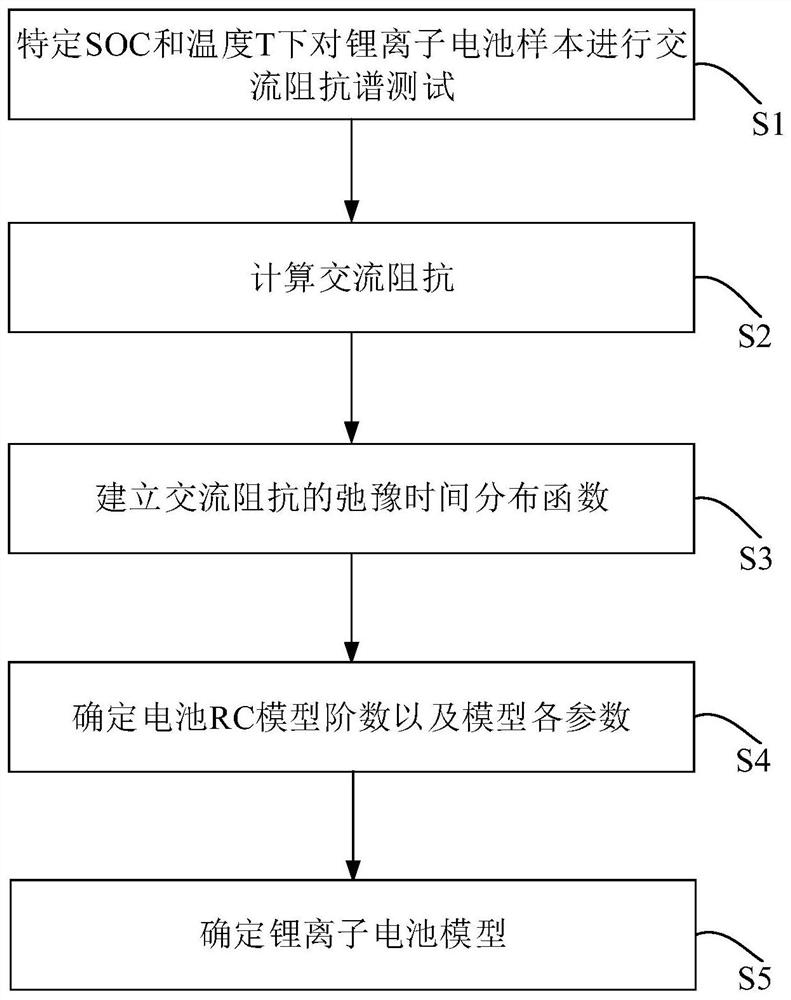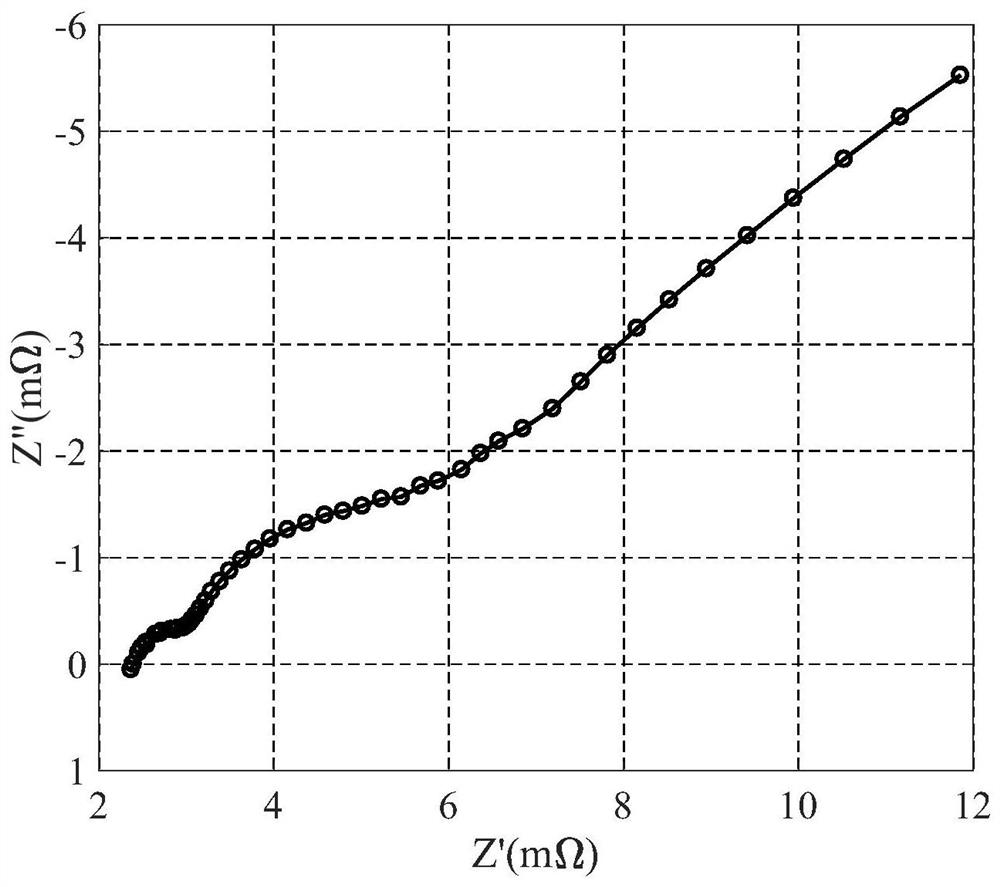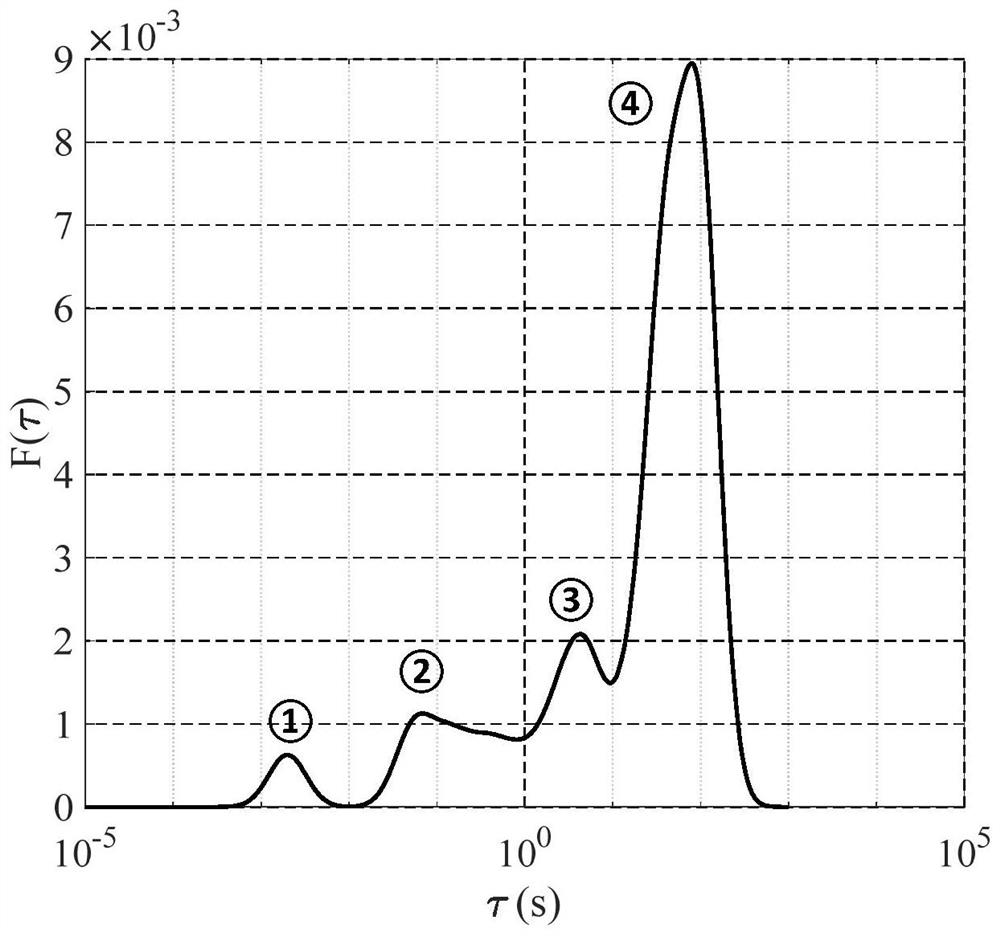A modeling method for lithium-ion batteries based on relaxation time distribution
A lithium-ion battery, relaxation time technology, applied in the direction of measuring electricity, measuring electrical variables, instruments, etc., can solve the problems of model parameter drift, personal subjective factors, and model accuracy reduction, so as to improve modeling accuracy and accuracy Acquisition, model accurate effect
- Summary
- Abstract
- Description
- Claims
- Application Information
AI Technical Summary
Problems solved by technology
Method used
Image
Examples
Embodiment
[0052] like figure 1 As shown, a method for modeling lithium-ion batteries based on relaxation time distribution, the method includes the following steps:
[0053] S1. Perform an AC impedance spectrum test on a lithium-ion battery sample at a specific SOC and temperature T;
[0054] S2. Calculate the AC impedance;
[0055] S3. Use the Debye relaxation time formula to establish the relaxation time distribution function of the AC impedance;
[0056] S4. Determine the order of the battery RC model and the parameters of the model according to the relaxation time distribution function of the AC impedance;
[0057] S5, determine the lithium-ion battery model.
[0058] When performing the AC impedance spectrum test in step S1, a voltage or current of a specific frequency is selected as the excitation source of the battery.
[0059] The calculation method of the AC impedance in step S2 is as follows:
[0060] Z(ω)=X(ω) / J(ω)
[0061] Z(ω)=Z′(ω)+jZ″(ω)
[0062] where J(ω) is the ...
PUM
 Login to View More
Login to View More Abstract
Description
Claims
Application Information
 Login to View More
Login to View More - R&D
- Intellectual Property
- Life Sciences
- Materials
- Tech Scout
- Unparalleled Data Quality
- Higher Quality Content
- 60% Fewer Hallucinations
Browse by: Latest US Patents, China's latest patents, Technical Efficacy Thesaurus, Application Domain, Technology Topic, Popular Technical Reports.
© 2025 PatSnap. All rights reserved.Legal|Privacy policy|Modern Slavery Act Transparency Statement|Sitemap|About US| Contact US: help@patsnap.com



